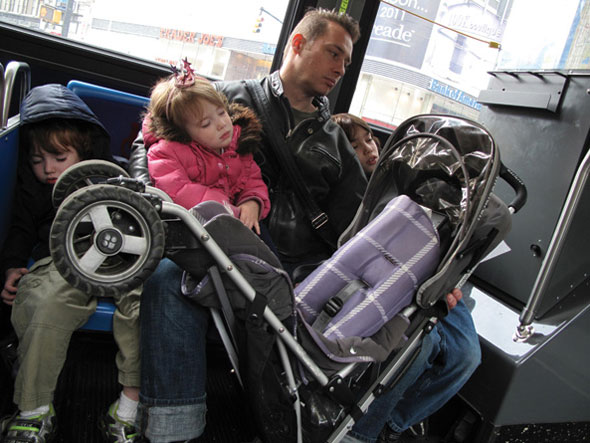photography
Man on the Street
Photographer Len Speier captures more than seven decades of New Yorkers
by Renée Alfuso / CAS ’06
Len Speier (LAW ’52) was one of the last young men to be called to serve in World War II. The bombs had already dropped on Hiroshima and Nagasaki, and the emperor had surrendered by the time he was assigned to Asaka, Japan. Speier was quickly promoted to corporal and worked as a clerk in the division’s adjutant general’s office there. In his free time, he explored, always with his camera, snapping images of everyday Japanese citizens. In one such photograph, boys play sandlot baseball in a ruined Tokyo street. Though the brutality of war was still fresh, Speier says that he came to develop a “compassion [for the Japanese that] never left me.”
That sensibility followed him back to New York, where he finished college, and then NYU Law School. Speier started a private practice as a commercial trial lawyer but couldn’t shake his love of being behind the lens. So after shifting his specialty to intellectual property, and continuing to take photos all the while, he began to teach a class at the New School: What Every Photographer Should Know About the Law. As his portfolio grew, he went on to teach photographic legal procedures at the Fashion Institute of Technology, as well as courses on black-and-white photography, the darkroom, and printing. By the 1970s, Speier had vastly reduced his legal practice and was immersed in street photography, where his goal was always the same: “Confronting the ordinary person, doing their ordinary things, in a, hopefully, magical way.”
Speier found plenty of magic on the streets of New York. He was particularly drawn to what he calls “the blending of architecture, design, and social consciousness.” For Speier, “architecture” is not about physical structures; rather, it’s the emotional environment he sees his subjects occupying. “People are unaware they place themselves in an architecture, a situation,” Speier says. “I like to find those, see that, and create for them what they don’t even realize they’re a part of.” His pictures can now be found in the permanent collections of the Biblioth¸que Nationale in Paris, the Museum of the City of New York, the International Center of Photography, and the photo archive of the New York Public Library. He has also been widely exhibited—after a recent retrospective at NYU’s Kimmel Center, Speier is preparing for a solo show of his work at Calumet Photographic this spring. And his commercial work for Random House, Forbes magazine, and Eyewitness News has taken him as far as China, France, and England.

By riding the bus through Manhattan with his camera, 85-year-old Speier has captured spontaneous and award-winning scenes of city life.
Born in 1927 to a working-class Jewish family in the Bronx, Speier developed an early awareness of social issues, calling out family members who expressed racism, which he considered as insidious as the anti-Semitism he had experienced. His activist inclinations later led to working with the NAACP’s ACT-SO cultural program, where he was photography coach to minority high school students. It also instilled in Speier, who got his first camera at age 13, an urge to “make a comment about the human condition.” One of his favorite photos depicts an elderly, homeless African-American woman sitting against a graffiti-ridden building in lower Manhattan with the words “Fight Racism” most prominent. “Hooded Figure in Snow,” a lonely, haunting image he shot from his Upper West Side apartment, shows a dark silhouette of a person walking atop a wintry hill in Central Park. The photo was used on the cover of an Australian novel, The Book Thief. Another classic New York photo depicts five elderly women perched on a grungy stoop, surrounded by shopping bags.
In 2003, Speier suffered a stroke, leaving him with balance issues and unable to carry much equipment. One day, he climbed aboard the M5 bus in Manhattan and soaked in the atmosphere. He found the characters inspiring and the opportunity to snap pictures “amazingly fluid.” And so, his “Bus Series” was born. Seated on a side bench, using a small digital camera, he has captured spontaneous and poignant scenes of city life: two sisters in matching outfits, an elegant old woman, a father saddled with three sleeping children. The latter image won first prize in the Salmagundi Club art contest, and the father—to whom Speier sent a copy of the photo—thanked him for “the most beautiful picture of my family I have ever seen.”
Speier rarely informs the subject until after he’s taken their photos—a method that has helped him capture New Yorkers at their most candid moments for decades. “I try not to disturb the elements I see,” he says. “I try to become an agent of design, art, truth, things like that. When it happens, I’m very happy.”







